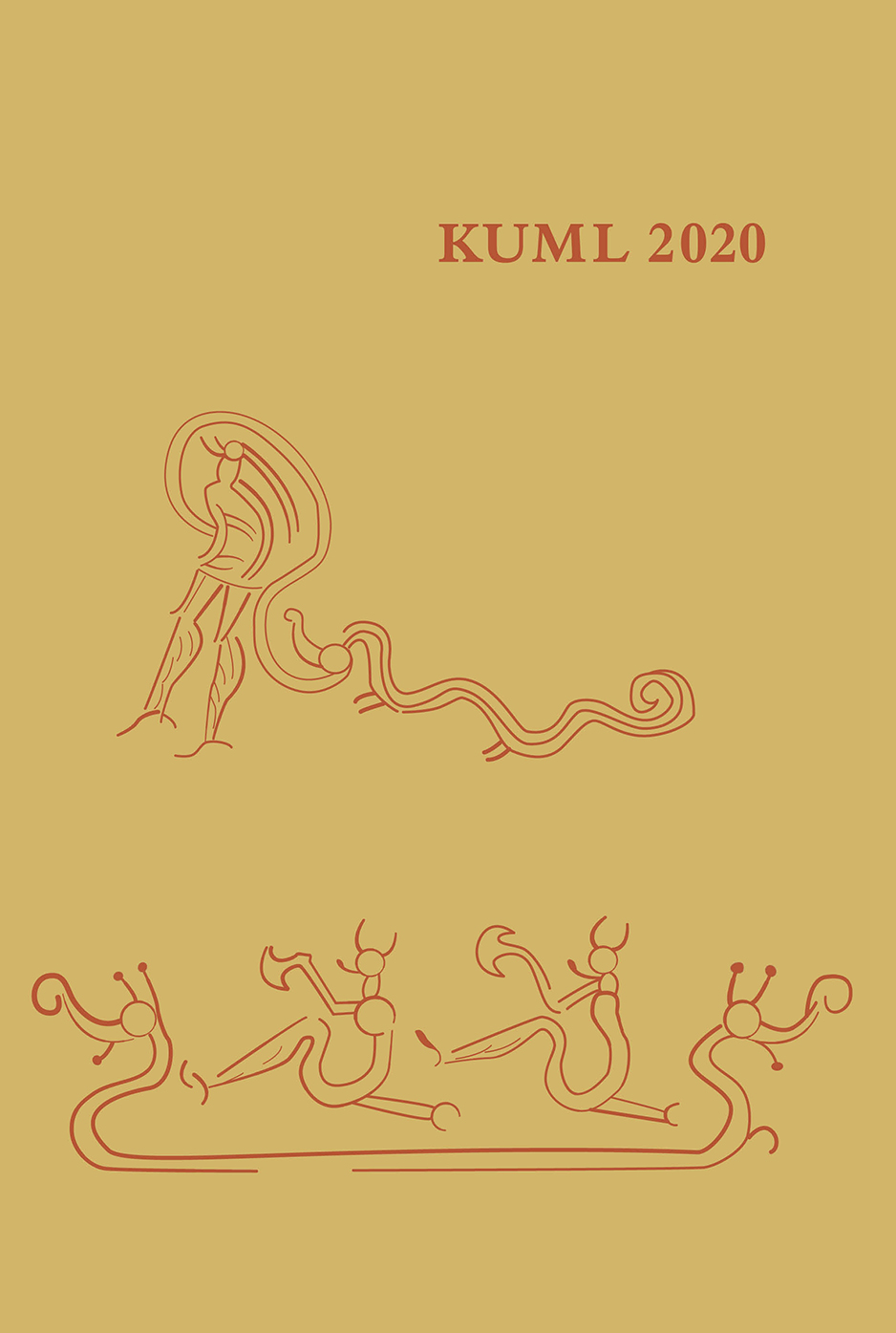“Sol-guden” i nyt lys
Gensyn med en velkendt ragekniv
DOI:
https://doi.org/10.7146/kuml.v69i69.126081Nøgleord:
Bronzealder, Ragekniv, Sol-gudResumé
Shedding new light on the “Sun God”
The Vestrup Mark razor revisited
The well-known Nordic Bronze Age razor from Vestrup Mark in northern Jutland, dated to c. 1100-900 BC, was re-examined in autumn 2018 and autumn 2019, and new details of the motif were revealed as a result. Using a digital Dino-Lite USB microscope, model AM4815ZTLx, with x10-x140 magnification and an inbuilt camera, detailed micrographs were taken of the ornamentation. By changing various settings on the camera, it was possible to “filter out” some of the corrosion and discolouration which has rendered parts of the motif almost invisible to the naked eye.
The Vestrup Mark razor is possibly the most published Nordic Bronze Age razor, and its motif is commonly regarded as epitomising the religious and ritual sphere of the period. The new analyses revealed, however, that the published illustrations of the razor are not entirely accurate (figs. 1-2 and 9). In one case, the motif has been interpreted incorrectly and then superimposed onto a photograph without alerting the reader’s attention to this manipulation (fig. 3). This is problematic, as later interpretations of the symbolism and meaning behind the motif have depended on this inaccurate illustration. The current article therefore draws attention to the risk of overly relying on old illustrations and highlights the benefits of implementing new analytical methods, even when dealing with well-published objects that have been sitting in museum storerooms for over a hundred years.
The low-power micrographic analysis revealed some new details and confirmed other well-established ones. The razor’s motif portrays a ship with zoomorphic prow and stern. The hybrid animals on the ship are horse-like with oversized eyes, horns, beards and curly beaks; a fairly common appearance in the Nordic Bronze Age (fig. 5). Two figures are seated in the ship, similarly beaked and horned. With their arms stretched forward they wield cult axes. Both the figures and the ship face left. These anthropomorphic figures look somewhat unnatural as their necks bulge out and their torsos are circular – and could also be interpreted as shields – and their legs are almost plastic, with accentuated calves (fig. 6).
Adjacent to the ship, an oversized anthropomorphic figure is depicted standing up (fig. 7) and connected by two meandering parallel lines to a horse-snake hybrid with one large eye, a curly beak and four legs (fig. 8). This anthropomorphic figure also has accentuated calves as well as apparently two sets of horns; one pair facing forward and the other continuing over the head and down the back. Some additional strokes across the middle of the figure may mark garments, possibly even a corded skirt. Above all of these, a typical stylized Bronze Age sun-horse can be seen, connected to two concentric circles by a set of parallel lines (fig. 4).
The newly discovered details (fig. 10) therefore support the previous religious/ritual interpretations of the motif. But in extension of this, a new interpretation of the central anthropomorph is proposed – that it could depict a Bronze Age ritual specialist or shaman wearing ritual paraphernalia as part of shamanistic practice and shapeshifting (fig. 11). This is based on recent research that offers shamanism as a potential explanation for the deviant burials seen at Hvidegården and Maglehøj. It has also been shown recently that shamanism and animism were likely present in the Nordic Bronze Age, where they intertwined with other religious practices and mythological tales of the time, such as the divine twins, which are arguably also present on this razor. Animistic notions are indicated for example by the large number of various hybrid beasts displayed on especially razors, including that from Vestrup Mark.
This new microscopic analysis therefore substantiates some of the previous interpretations of the motif on this razor, while at the same time evoking new ones. It remains evident, however, that the motif is placed firmly within the spiritual sphere of the Nordic Bronze Age and, as such, we may be getting a little closer to this aspect of Bronze Age society and life, now the motif is once again visible.
Downloads
Publiceret
Citation/Eksport
Nummer
Sektion
Licens
Fra og med årgang 2022 er artikler udgivet i Kuml med en licens fra Creative Commons (CC BY-NC-SA 4.0).
Alle tidligere årgange af tidsskriftet er ikke udgivet med en licens fra Creative Commons.


